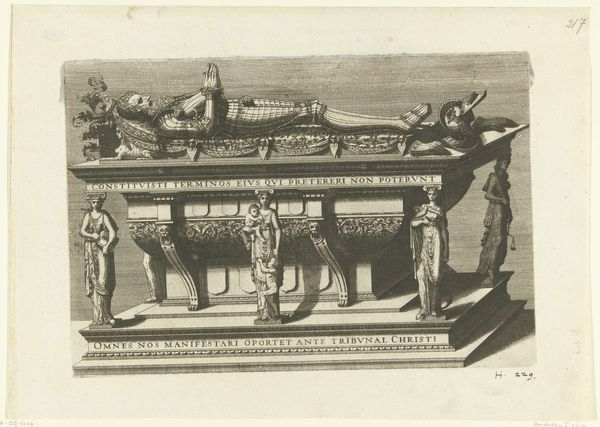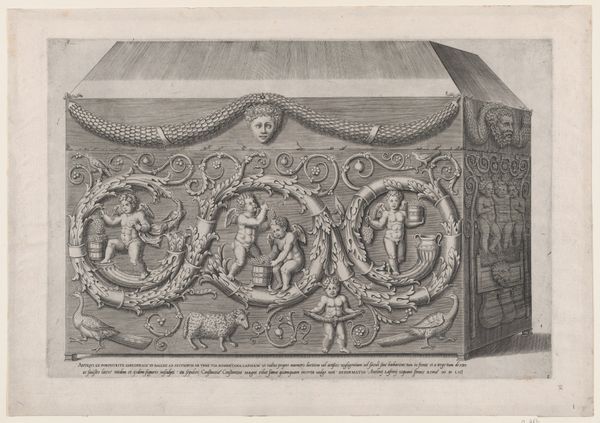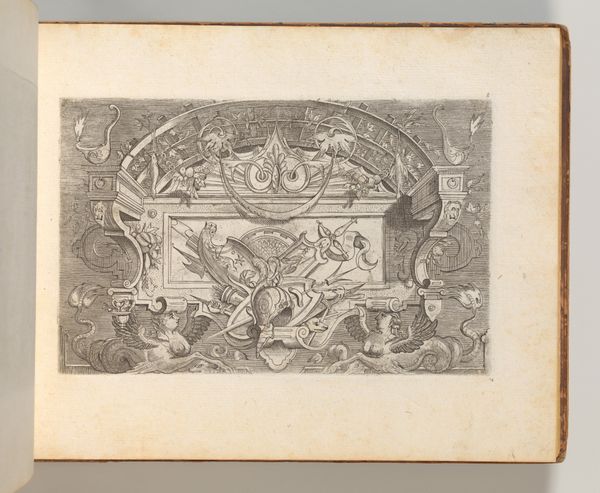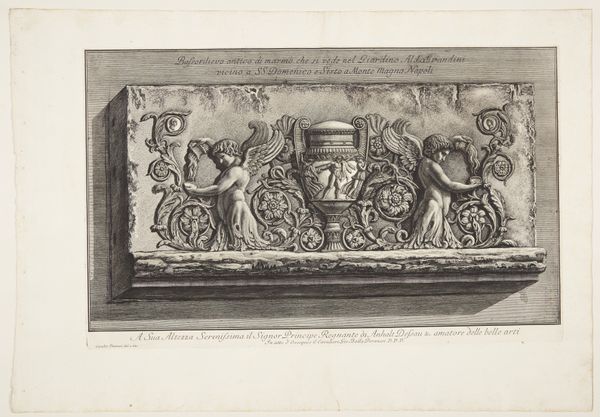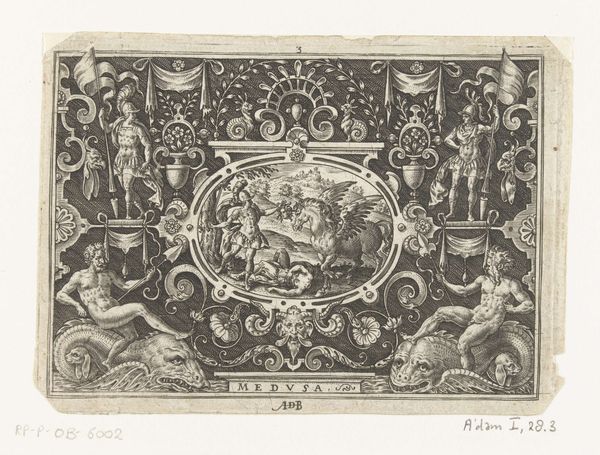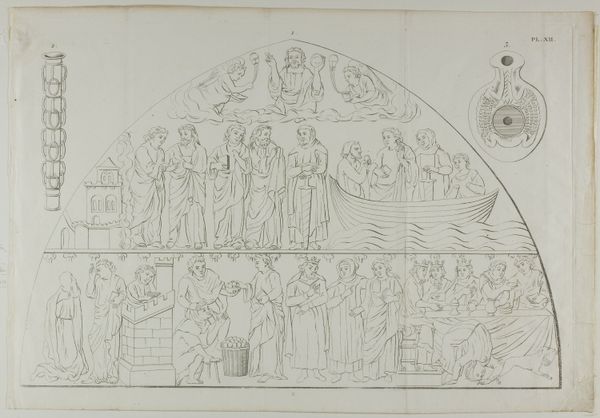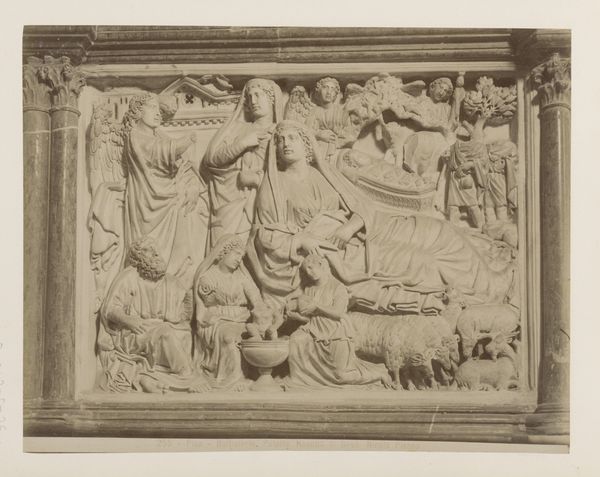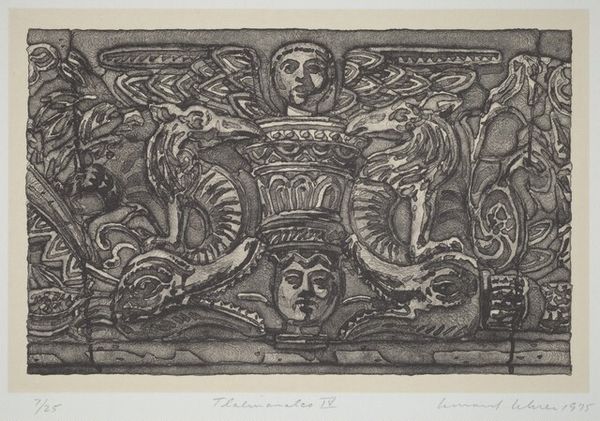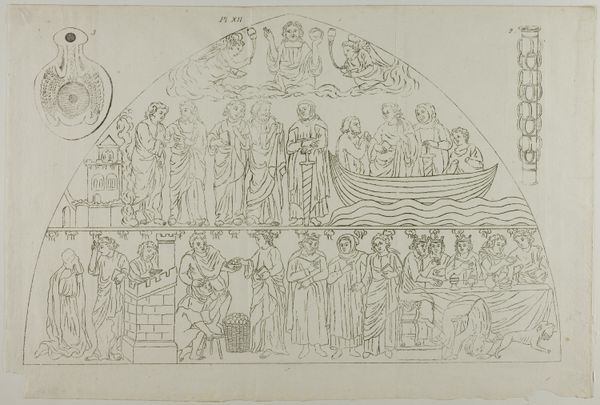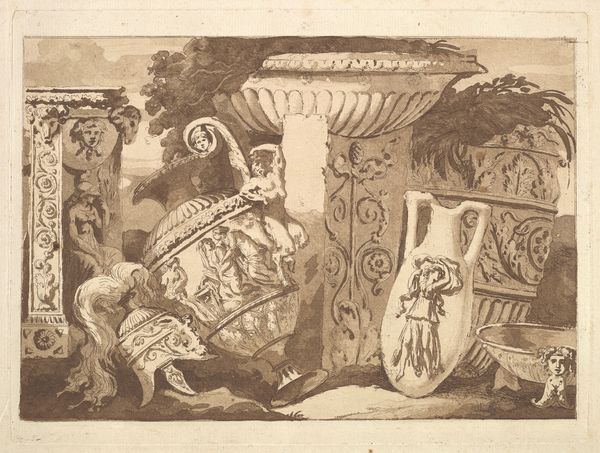
Marble relief of a trireme from the temple of Fortuna, Praeneste 1769 - 1778
0:00
0:00
print, relief, engraving
#
neoclacissism
# print
#
relief
#
ancient-mediterranean
#
history-painting
#
engraving
Dimensions: 358 mm (height) x 525 mm (width) (plademaal)
This print of a marble relief of a trireme from the temple of Fortuna, Praeneste, was made by Giovanni Battista Piranesi in the 18th century. As an etching, the print is the result of an indirect process – acid biting into a metal plate, to create an image that can then be reproduced. Piranesi, like other artists of the period, would not have made his own paper, nor mixed his own inks. Instead, he depended on an emerging, and increasingly elaborate, infrastructure of production. Think of this print as an early instance of mass media. The stark contrast and fine lines of the print capture the texture and weight of the original ancient marble relief, but also the crispness and reproducibility of the print medium. Consider the labor involved: from the quarrying of the marble to the workshops producing paper and ink, each element carries a complex history of craftsmanship and commerce. By focusing on these aspects, we can understand the print not just as an image, but as an object deeply embedded in its time.
Comments
No comments
Be the first to comment and join the conversation on the ultimate creative platform.
